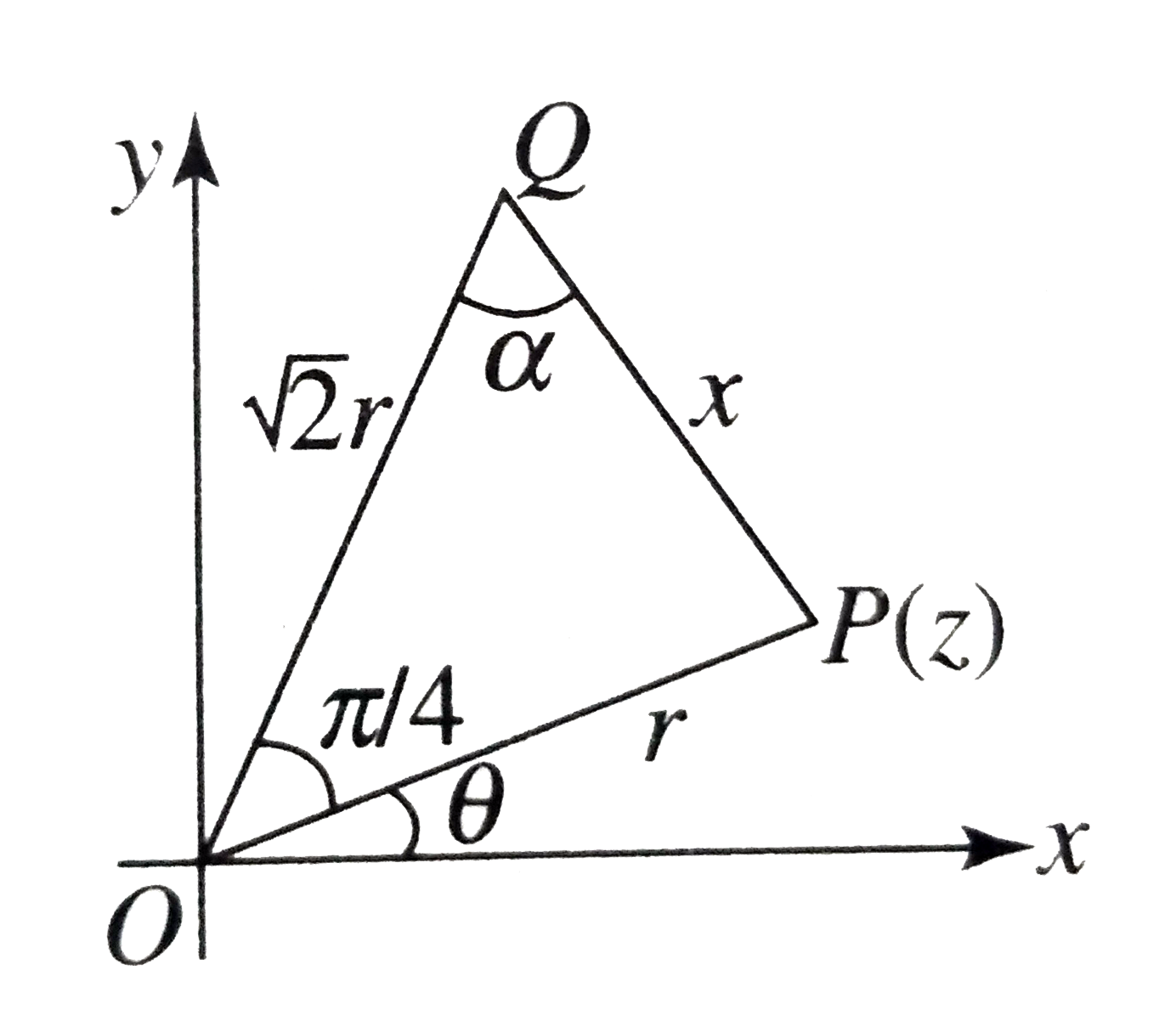Let P denotes a complex number z=r(cosθ+isinθ) on the Argand's plane, and Q denotes a complex number √2|z|2(cos(θ+π4)+isin(θ+π4)). If 'O' is the origin, then ΔOPQ is
isosceles but not right angled
right angled but not isosceles
right isosceles
equilateral
The correct Answer is:C
(c) 
ZP=r(cosθ+isinθ)
Z0=√2|z|2(cos(θ+π4)+isin(θ+π4))
=√2r[cos(θ+π4)+isin(θ+π4)]
From the figure,
cosπ4=2r2+r2−x22⋅√2r⋅r=3r2−x22√2r2
∴1=3r2−x22r2
⇒r2=x2⇒x=r⇒ Triangle is right isosceles.
Topper's Solved these Questions
- COMPLEX NUMBERSBOOK - CENGAGE ENGLISHCHAPTER - COMPLEX NUMBERSEXERCISE - Multiple Correct Answer
11 Videos
- COMPLEX NUMBERSBOOK - CENGAGE ENGLISHCHAPTER - COMPLEX NUMBERSEXERCISE - Comprehension
11 Videos
- CIRCLESBOOK - CENGAGE ENGLISHCHAPTER - CIRCLESEXERCISE - Comprehension Type
8 Videos
- CONIC SECTIONSBOOK - CENGAGE ENGLISHCHAPTER - CONIC SECTIONSEXERCISE - All Questions
101 Videos
Similar Questions
Let z be a complex number satisfying |z+16|=4|z+1|. Then
View SolutionIf z is a complex number such taht z2=(¯z)2, then find the location of z on the Argand plane.
View SolutionFind the locus of a complex number z such that arg (z−2z+2)=π3
View SolutionIf z≠0 be a complex number and arg(z)=π/4, then
View SolutionIf n1 denotes the maximum number of roots of sinθ=k1 in [0,2π] and n2 denotes the maximum number of roots of cosθ=k2 in [0,2π], then
View SolutionIf a complex number z satisfies |z|=1 and arg(z−1)=2π3, then (ω is complex imaginary number)
View SolutionShow that the area of the triangle on the Argand diagram formed by the complex numbers z, zi and z+zi is =12|z|2
View SolutionIf z be any complex number (z≠0) then arg(z−iz+i)=π2represents the curve
View SolutionLet z=cosθ+isinθcosθ−isinθ,π4<θ<π2. Then arg(z) =
View SolutionIf π < θ <2π and z=1+cosθ+isinθ , then write the value of |z|
View Solution
